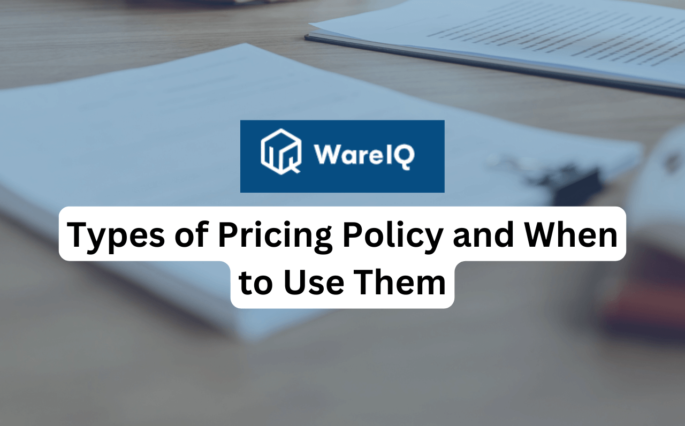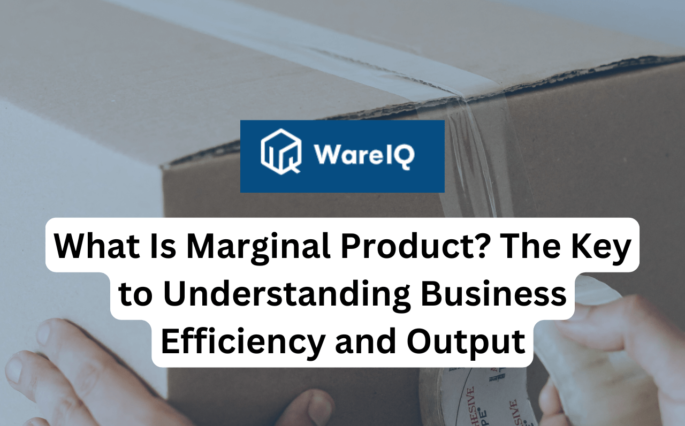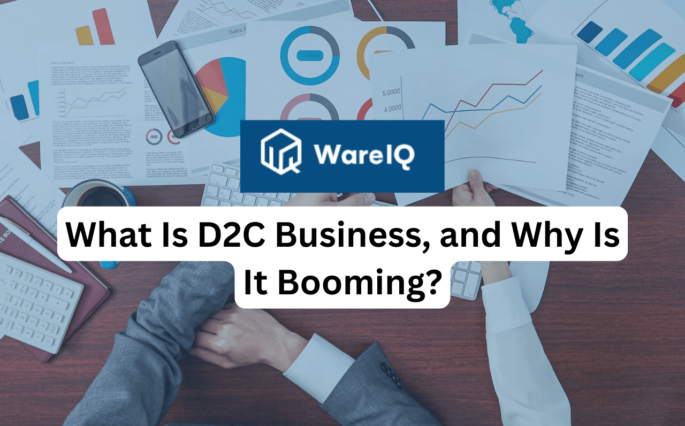How to Reinventorize Order Cancellations


There are some things you simply cannot avoid when you first launch your e-commerce firm, and no matter how flawless your entire warehouse operation is, returns and order cancellations still occur.
Whatever the cause, you must always be well-equipped to deal with refunds and cancelled purchases. There are certain actions you must take to ensure better order management and boost the overall efficiency of your warehouse operations in order to be ready for such circumstances.
Once these fundamental policies on returns and order cancellations have been set, you must provide your warehouse with the necessary tools to process returns more quickly, smoothly, and effectively. Returns must be handled carefully, therefore you need a strong returns management system that automates processes, provides real-time updates, monitors each return, examines the causes of returns, and does much more for all sort of order cancellation.
Cancellation of order is indeed a challenge that needs to be managed efficiently in E-commerce business. E-commerce cancellation rate is an important indicator when it comes to cancellation of orders. An agile supply chain responds efficiently when they heat that the ordered is cancelled.
- Return of Product Types
- Restocking levels in WooCommerce Store
- Conclusion
- What happens when an order is cancelled?
- Which ecommerce platform provide instant replacement?
- Does order cancellation affect the reputation of the seller?
- What is the relevance of ecommerce cancellation rates?
- How can One enhance order management and warehouse efficiency for better preparedness in handling returns and cancellations?
- What happens when a return request is made in the form of a replacement order?
- How does the process differ when an entire order is cancelled due to a returned item?
- What are the long-term benefits of employing various techniques for order management and cost reduction?
- How can I handle the complexity of managing multiple techniques and tasks simultaneously, especially with reliance on physical labor?
- Can you provide examples of necessary tools for processing returns efficiently in a warehouse setting?
- Are there specific guidelines for setting fundamental policies on returns and cancellations?
- How can I ensure that cancelled/refunded orders are automatically re-stored to save time?
- Are there any recommended best practices for managing inventory in a large WooCommerce business?
- What steps can I take to minimize errors and streamline the returns process in my warehouse operations?
Return of Product Types
Marketplace Orders
The e-commerce warehouse management system (WMS) in charge of your complete business is updated through market API and an RTO is started in the case of marketplace-oriented order cancellations.
- Instant Replacement Process: When a return request is submitted in this form of return, a replacement order is instantly established and the new SKU is mapped against the old one. The returned item is received when a courier manifest is signed. Instant replacement is indeed a remedy to the order cancellation challenges.
- Differentiated Return Mapping: In contrast to the first procedure, the new item to be provided in this return type is mapped against the old one without attention being paid to the item to be returned.
- SKU Mapping After Return Confirmation: A new order for the same item is made with a new SKU against the old SKU only after a courier manifest with a return confirmation has been signed when a return request of this sort is raised.
- Order Cancellation and Refund Process: With this procedure of order cancellation, the transaction is completely cancelled rather than a replacement for the returned item being given out. In this case, the entire order cancellation happens when the returned item is received and a refund is started.
Website Order Returns
The method of returns changes to CIR, or customer-initiated returns, if you sell from your own website and choose the Direct to Consumer option. In this way, returns are updated through the API of your shipping provider.
Returns may be picked up by logistics partners using the CIR method, and the seller can update the information in each partner’s order management system. When a buyer delivers a goods back to the vendor and mails thorough return instructions, they are using a less common form of CIR.
Order Returns directly to the Warehouse
You must be completely informed of some of the inclusion and additional costs associated with choosing to send your returned item back to your warehouse as well as any particular steps that might need to be taken.
In such cases, the order cancellation is often opposed to returned and is stored in the same manner as it was sent out initially after undergoing another quality check.
In the long term, using all these different techniques and jobs might help you get better outcomes and reduce your costs, but managing them all at once can be difficult, especially if you rely on physical labour.
But with the proper returns management tools on your side, which provide total work automation, you can drastically increase the pace of each procedure, provide better services to your clients, and boost the growth of your eCommerce company.
Restocking levels in WooCommerce Store
Accurate inventory counts are very crucial if you want to sell tangible goods through your WooCommerce site. Knowing how many t-shirts you have on hand may help you decide whether to replenish speciality goods following a significant sale. With WooCommerce, keeping an eye on stock levels and tracking sales is simple.
| Part-1 | Plugin for Order Cancellation Management | Plugin by WooCommerce automates cancellation updates.Install the WooCommerce Cancel Abandoned Order Plugin.Activate it.Once a customer cancels an order, stock levels will automatically adjust. |
| Part-2 | Restocking by WooCommerce | See the Configuring WooCommerce Settings > Inventory Section.WooCommerce > Settings > Products > Inventory |
When you run a large woocommerce business with a lot of inventory or when processing a lot of orders, automatic re-storage of order cancelled/refunded orders may help you save time. When an order cancellation or return happens, WooCommerce Auto Restore Stock will automatically replenish your stock. When the status of the order changes from on-hold, processing, finished, to either order cancelled or refunded, the inventory/stock restoration is triggered. When WooCommerce Auto Restore Stock replenishes the stock, it will also add order notes to the relevant order to reflect the updated amounts and to highlight that the stock was replenished.
Conclusion
There are certain actions you must take to ensure better order management and boost the overall efficiency of your warehouse operations in order to be ready for such circumstances. Once these fundamental policies on returns and cancellations have been set, you must provide your warehouse with the necessary tools to process returns more quickly, smoothly, and effectively.
When a return request is submitted in this form of return, a replacement order is instantly established and the new SKU is mapped against the old one. In this case, the entire order cancellation happens when the returned item is received and a refund is started.
In the long term, using all these different techniques and jobs might help you get better outcomes and reduce your costs, but managing them all at once can be difficult, especially if you rely on physical labour. When you run a large woocommerce business with a lot of inventory or when processing a lot of orders, automatic re-storage of order cancelled/refunded may help you save time.
What happens when an order is cancelled?
When an order is cancelled, the transaction is reversed, and the customer typically receives a refund. It’s essential to check the specific cancellation policies of the platform or seller, as some may have restocking fees or specific conditions for refunds.
Which ecommerce platform provide instant replacement?
Not all ecommerce platforms provide instant replacements, but some like Amazon and eBay have efficient systems for quick replacements. Ensure to review the policies of each platform to understand their replacement processes and timeframes.
Does order cancellation affect the reputation of the seller?
Yes, order cancellations can impact the reputation of a seller. Excessive cancellations may lead to negative reviews or ratings, affecting the trust customers place in the seller. Maintaining clear communication and fair cancellation policies can help mitigate these effects.
What is the relevance of ecommerce cancellation rates?
Ecommerce cancellation rates are crucial metrics for sellers and platforms. High cancellation rates may indicate issues with product availability, customer satisfaction, or order processing. Monitoring and analyzing these rates can help businesses refine their processes and enhance the overall customer experience.
How can One enhance order management and warehouse efficiency for better preparedness in handling returns and cancellations?
One can implement fundamental policies on returns and cancellations and equip the warehouse with necessary tools for streamlined processing.
What happens when a return request is made in the form of a replacement order?
An instant replacement order is generated, and the new SKU is mapped against the old one.
How does the process differ when an entire order is cancelled due to a returned item?
The entire order is cancelled upon receiving the returned item, and a refund process is initiated.
What are the long-term benefits of employing various techniques for order management and cost reduction?
Employing diverse techniques can lead to improved outcomes and reduced costs in the long run.
How can I handle the complexity of managing multiple techniques and tasks simultaneously, especially with reliance on physical labor?
It can be challenging to manage various techniques at once. Consider automation, especially for large WooCommerce businesses with extensive inventory or high order volumes.
Can you provide examples of necessary tools for processing returns efficiently in a warehouse setting?
Necessary tools may include barcode scanners, inventory management software, and efficient sorting systems.
Are there specific guidelines for setting fundamental policies on returns and cancellations?
Yes, ensure that policies are clear, concise, and cover key aspects such as return eligibility, timeframes, and refund procedures.
How can I ensure that cancelled/refunded orders are automatically re-stored to save time?
Consider utilizing automated systems or integrating plugins that facilitate seamless order re-storage.
Are there any recommended best practices for managing inventory in a large WooCommerce business?
Implement a robust inventory management system, conduct regular audits, and prioritize accurate product categorization.
What steps can I take to minimize errors and streamline the returns process in my warehouse operations?
Provide adequate training for staff, use reliable tracking systems, and establish clear communication channels with customers regarding return instructions.








